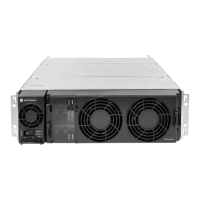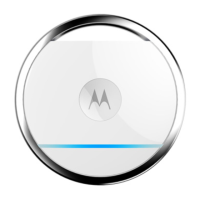1-8 Theory of Operation
All specifications noted above are in accordance to TIA603D unless otherwise noted as below.
1.4 Theory of Operation
The MTR3000 Base Station/Repeater (BR) provides the radio frequency (RF) link between the base
station/repeater and the subscriber radios. The base station/repeater acquires inbound signals via its
external receive (Rx) antenna and then amplifies, filters and demodulates the signals into data or
voice packets. From that point, the data is either forwarded to the base station/repeater transmitter to
be re-modulated and amplified for delivery to subscriber radios, and/or the data is delivered via a
wired interface for distribution to networked base station/repeaters, consoles, or other networked
infrastructure.
The MTR3000 base station/repeater consists of a Receiver module, Exciter module, station control
module (SCM), power amplifier (PA) and power supply (PS). These modules are also known as field
replaceable units (FRU).
• The Receiver Module is a dual heterodyne Receiver which receives the RF signal from the
subscriber’s transmitter. It then converts the resulting final intermediate frequency (IF) from
an analog signal to that of a digital word in IQ signal format. Finally, the Receiver delivers the
IQ signal, via the SSI bus, to the SCM for demodulation. Additionally, the Receiver also
provides for its own metering and diagnostics via software, as well as a self-contained
calibration (no field tuning needed for Receiver Module).
• The Exciter Module converts a two-port base band data signal, sent over the SSI bus from
the SCM, to an analog signal representation. The analog signal is then modulated with a low
power RF transmitter carrier that is generated by the Exciter. The low power modulated RF
carrier is then amplified and delivered to the PA at approximately +14 dBm for further
amplification. The Exciter and PA constitute the transmitter of the MTR3000. Additionally, the
Exciter also provides its own metering and diagnostics via software, as well as a self-
contained calibration (no field tuning needed for Exciter Module).
Audio Distortion <3%
FM Hum and Noise 25 kHz / 12.5 kHz 50 dB / 45 dB
FCC Designation ABZ89FC4823 (403–470 MHz) or
ABZ89FC4825 (470–524 MHz)
Note (*) Per TIA603
(**) Per TIA102 Method
(
‡
) Without Rx peripherals attached
Note
To determine the proper amount of air conditioning at a radio site, refer to the “Power
Dissipation” and “BTU Energy” specifications in the MTR3000 Product Planner located in
the link: http://ecat.comm.mot.com/ecat/pricebooks/dup/MTR3000.htm.
Table 1-4 MTR3000 Base Station/Repeater Specifications (Continued)
Parameter
Specifications
UHF

